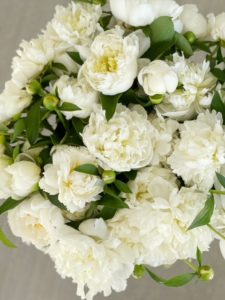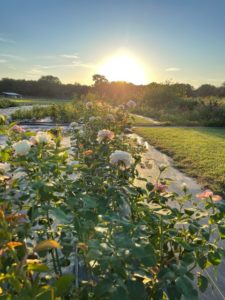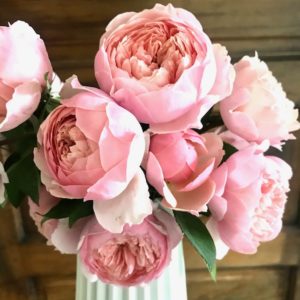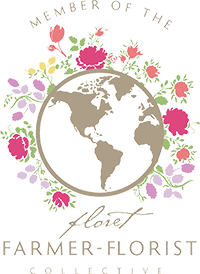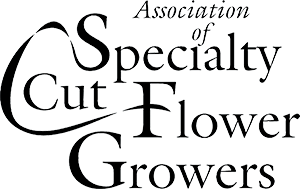August & September in the south still means hot. Often VERY hot. But after months of heat, I’m always so ready to welcome fall and the cooler weather that it brings, even though summer is still hanging out. Summer-fall. As other parts of the country begin to share pictures of leaves changing colors, their favorite sweaters and boots, and pumpkin spiced latte recipes, I’m still sweating and in my flip flops, sipping on iced coffee. So what does all of this have to do with flowers?
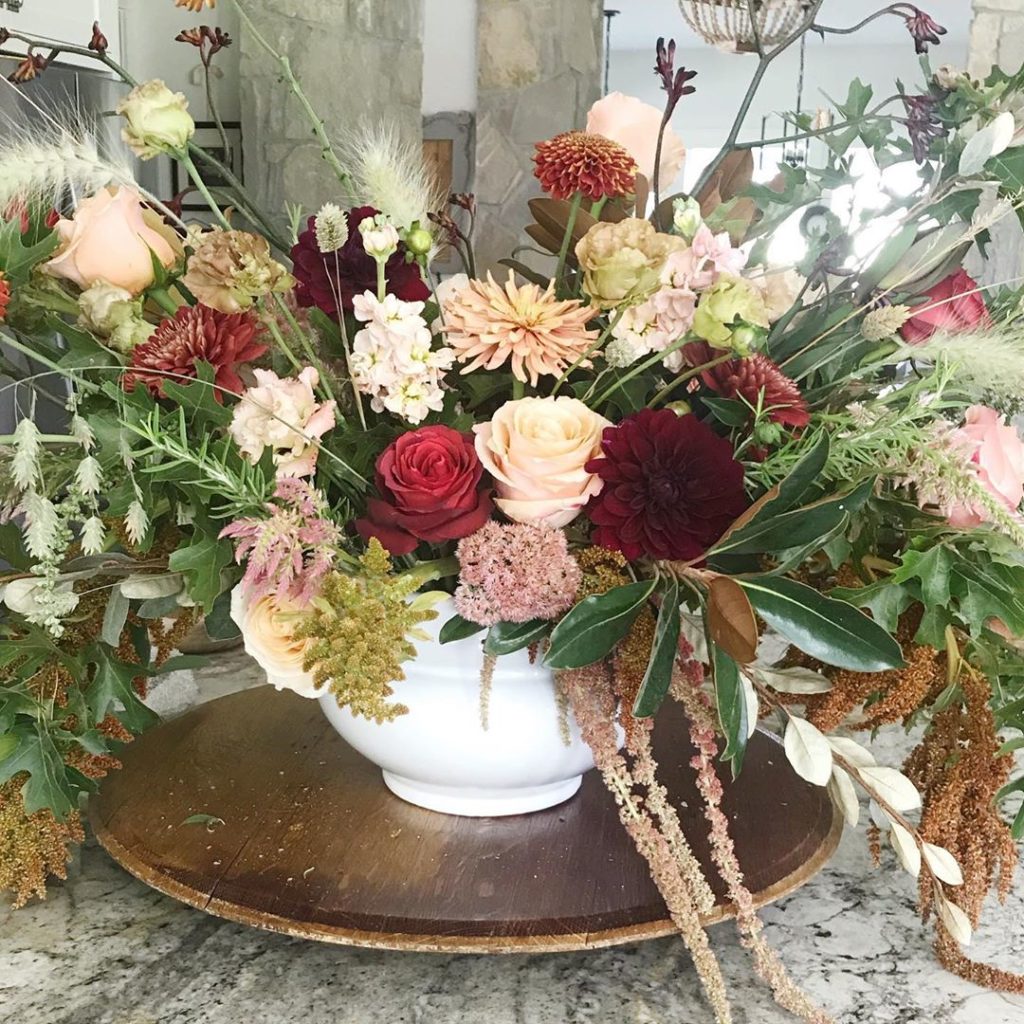

hot biscuits amaranth 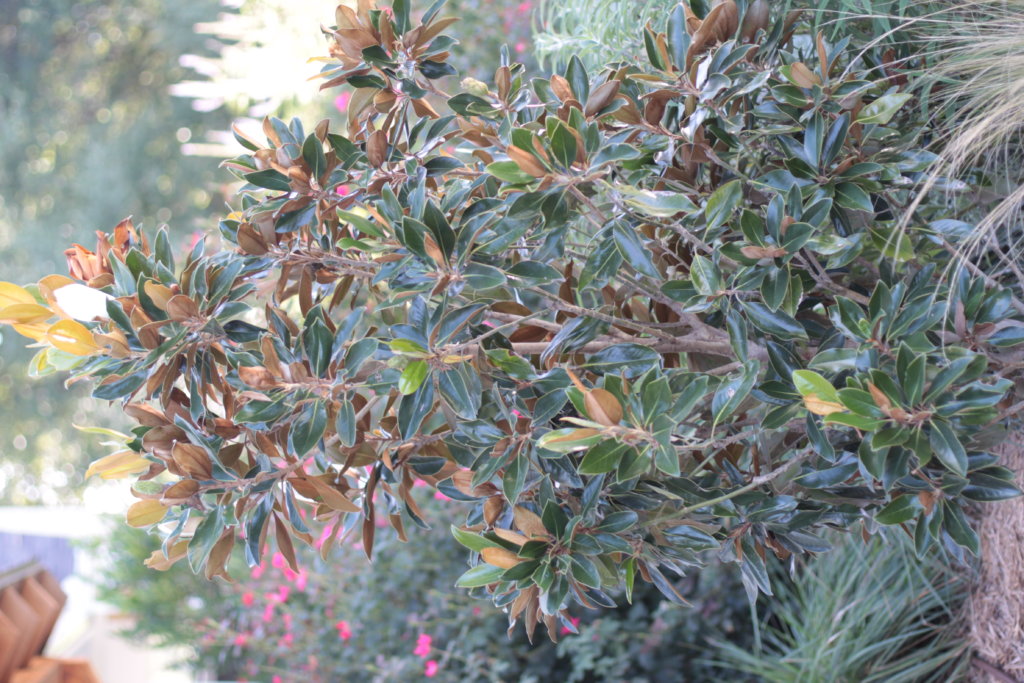
magnolia 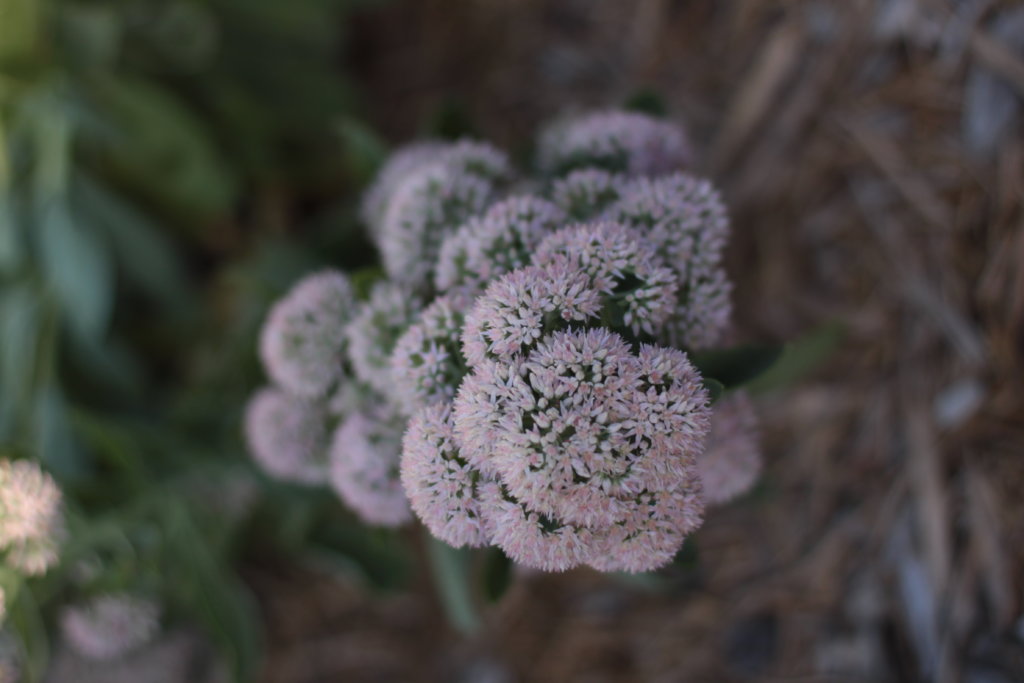
sedum
Flowers are one of the best ways to celebrate and represent the fade of summer into fall.
There are several plants that I have tucked into my landscape that are my go-to for this transitional time of year, summer into fall. As a cut flower grower, I also plant these into my field so that I can use them liberally both in my home and in arrangements for clients. Here are my favorites:
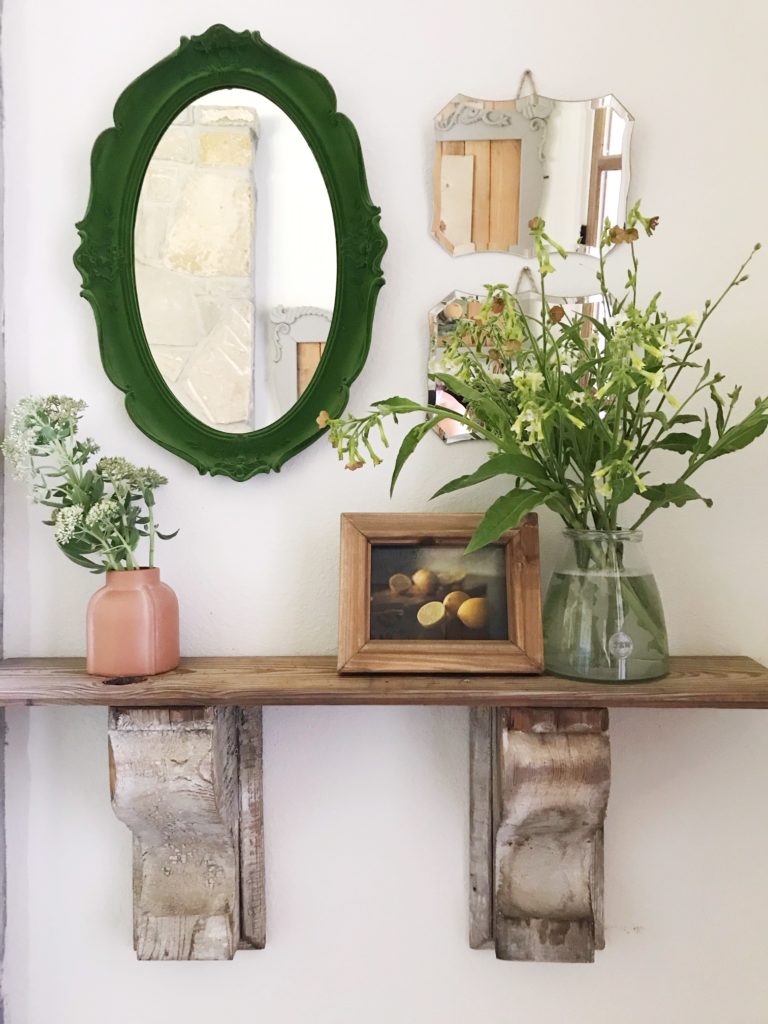
my summer-fall entry 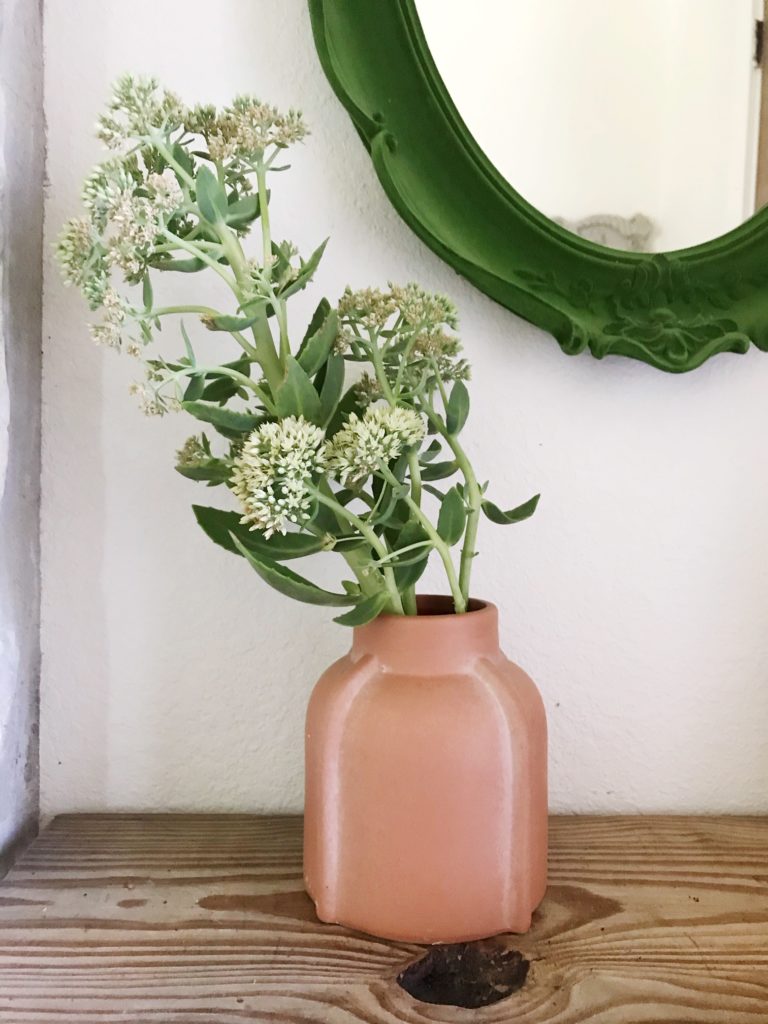
sedum and terra cotta 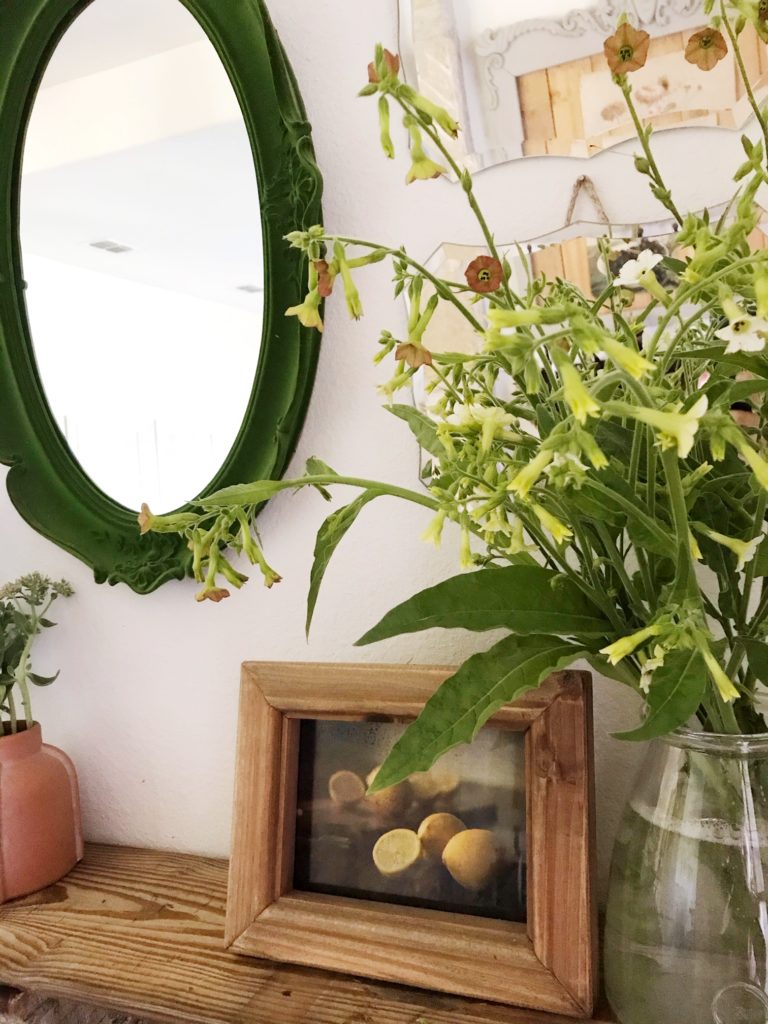
flowering tobacco
Top 5 plants for late summer / early fall cutting:
- large branches – Almost everyone has access to a tree they can “prune.” My favorites this time of year are oak and magnolia branches. But ANY tree or large shrub branch works. If you don’t have access to limbs to cut, look on the streets after a rainstorm (if you’re blessed with rain this time of year). Free pickings. Cut larger than you think and don’t overthink the shape of the branch. A heavy, tall vase or pot is the best vessel for tall branches. (Decorators will tell you that your limb shouldn’t be more than double the height of the vase, but this rule is definitely one you can break).
Pro tip: cut a slit in the end of the branch so that it will “drink” water better. Also, add a couple of drops of bleach to keep the water clean. Change out the water once a week or as needed. OR, place the stem in the vase without water and let it dry out. Oak and magnolia work particular well this way.
2. abelia – Really any shrub will work, but if you have room for an abelia grandiflora, then plant one. In late summer, the leaves become tinged with bronze and tiny rust flower heads cluster along the branches. If you live in a slightly northern climate (I’m in Texas), then ninebark is a great choice. I love this one so much, that I planted an entire row of them just to have for cutting and using in arrangements.
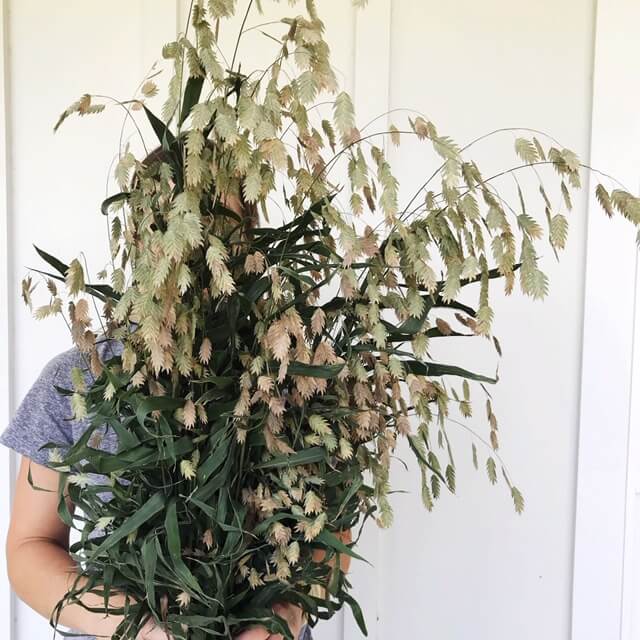
sea oats 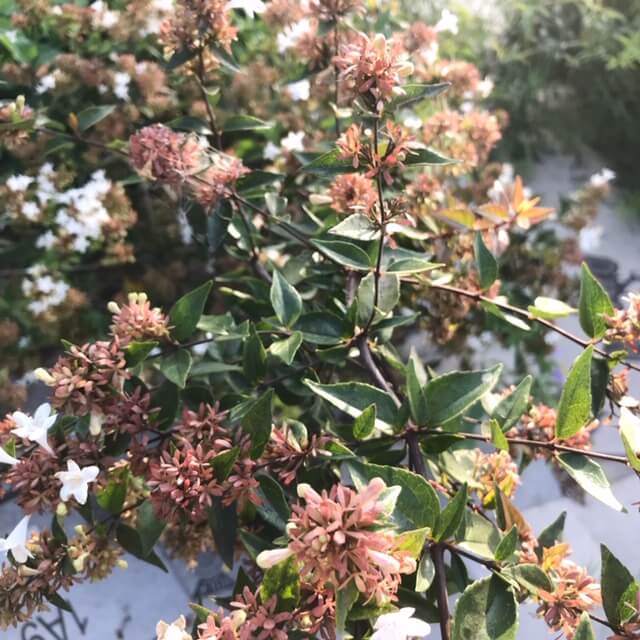
abelia 
scabiosa stellata pods
3. sedum–Autumn Joy sedum specifically. With it’s succulent-like leaves and textured blooms, sedum is one of my favorites this time of year. The flowers start out in summer as a light green, then turn to pale pink, deepening into rust. Placing one chunky stem in your favorite vase represents the changing of seasons perfectly. And bonus, if you keep the water fresh, the stem will last for weeks (even until true fall). For the vase, try something a little heavier, such as terra cotta or stone.
Pro tip: use an ordinary clay or stone pot by simply lining it with a mason jar–any glass or plastic that will hold water. Or read this for other flower vessel ideas.
BONUS: try sedum instead of a mum for a porch potted plant. Then transplant into your garden so that you can enjoy it again next year!
4. grasses-It’s no secret that I’m a fan of ornamental grasses. I use them both in my landscapes and arrangements. (It’s kind of my signature!) In the landscape, the spiky texture often begins to brown in late summer, making it a great one to bring inside. The plumes of most grasses will hold up well out of water, so you can literally place some in a vase, without water, and enjoy them through the fall season.
Some of my top picks are feather top, Karl Forster (feather reed), bunny tails, sea oats and of course, pampas, because they are definitely having a moment right now. (For the larger grasses like pampas, dry for a week or so hanging upside down before placing in a vase). If you don’t have any grasses in your yard, take your kids, pets or just yourself on a walk and forage. Even Johnson grass looks pretty cool in a vase this time of year!
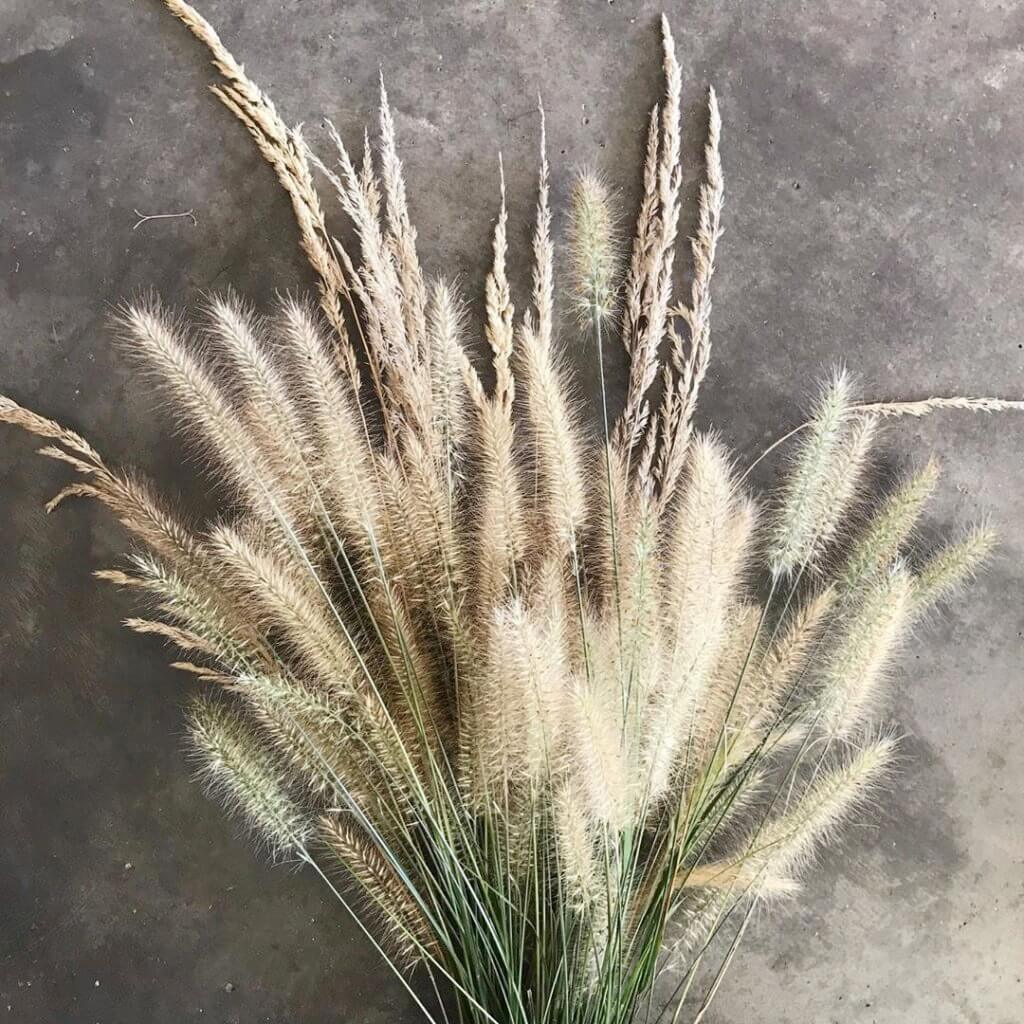
feather top & feather reed 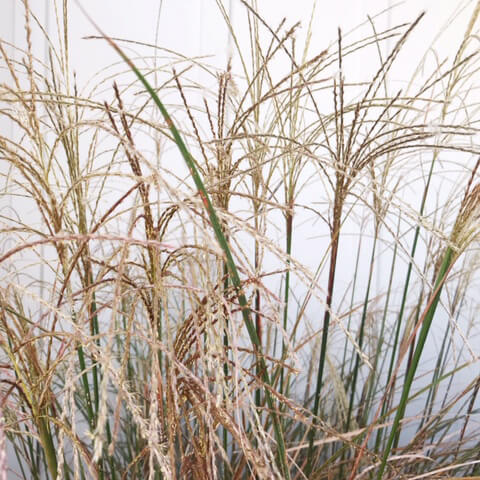
maiden grass 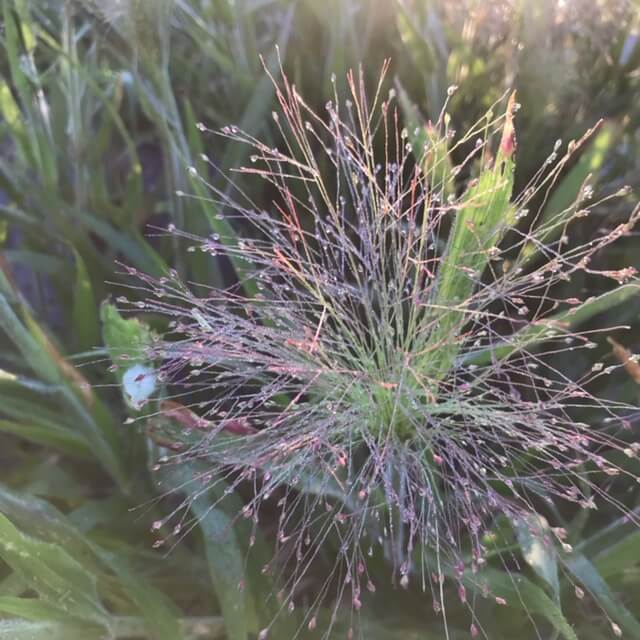
frosted explosion grass
5. seed heads – the purpose of a flower is to attract pollinators and then go to seed so that another plant can form. By the end of summer, many flowers have done their job and hold interesting seed pods on their stem tips. I leave most of these for the birds to shelter in over winter, but I also love adding them to arrangements and even clumping them together in a vase, again no water necessary. Coneflower, Siberian or Dutch iris, vitex (or crape myrtle or lilac), dill, black-eyed susan and sunflowers are all candidates. (Dried flowers are also having a moment right now!)
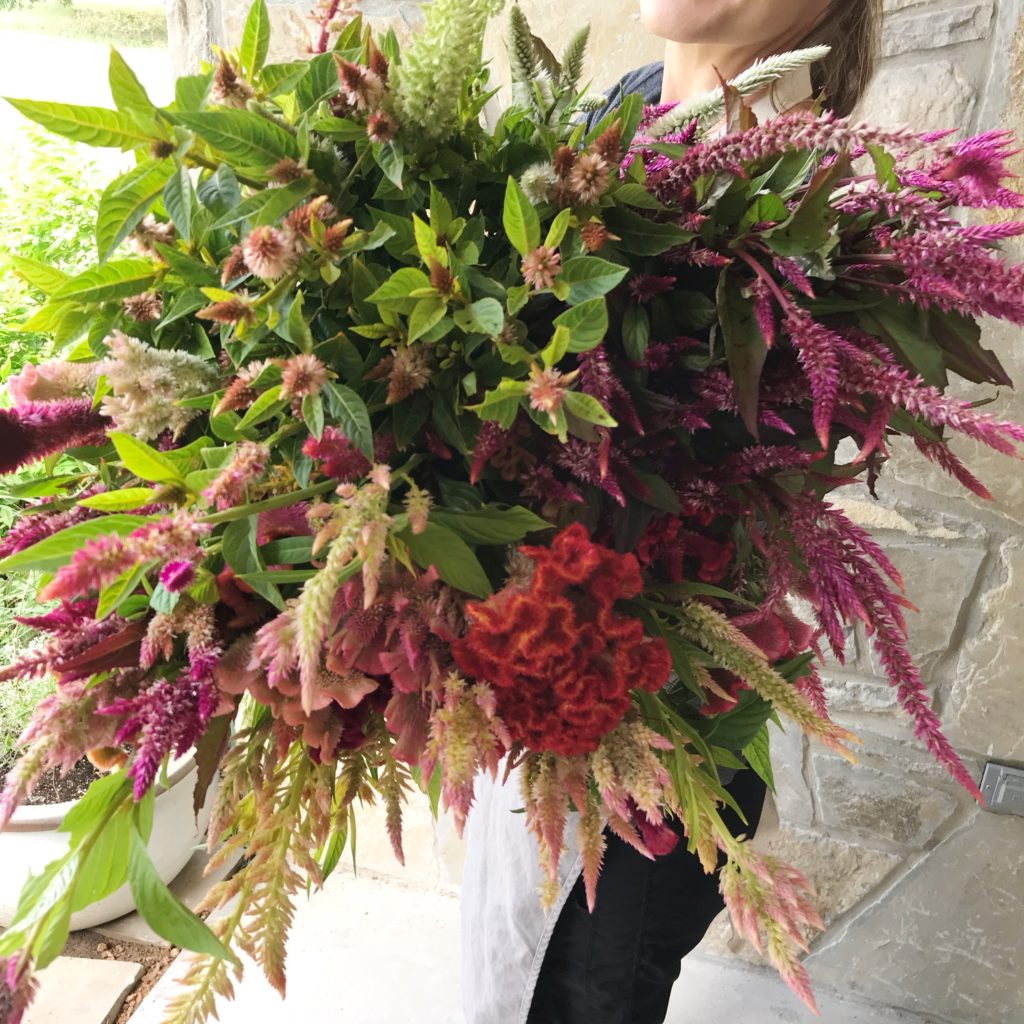
celosia
(easy to grow from seed)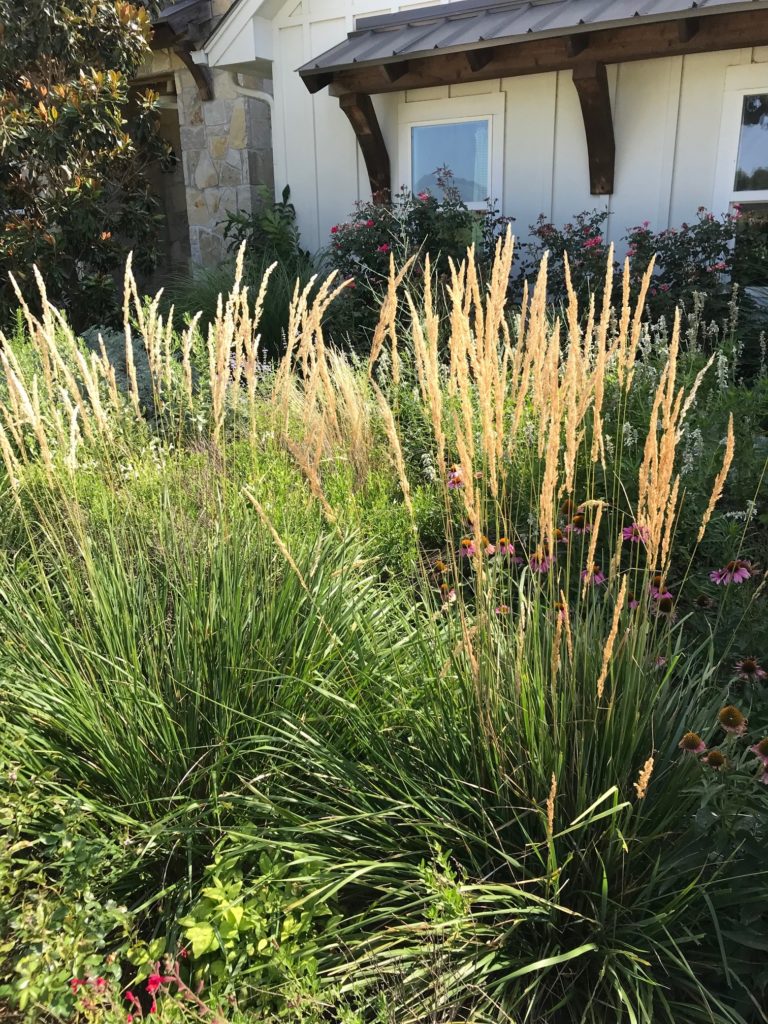
feather reed
in my front flower bed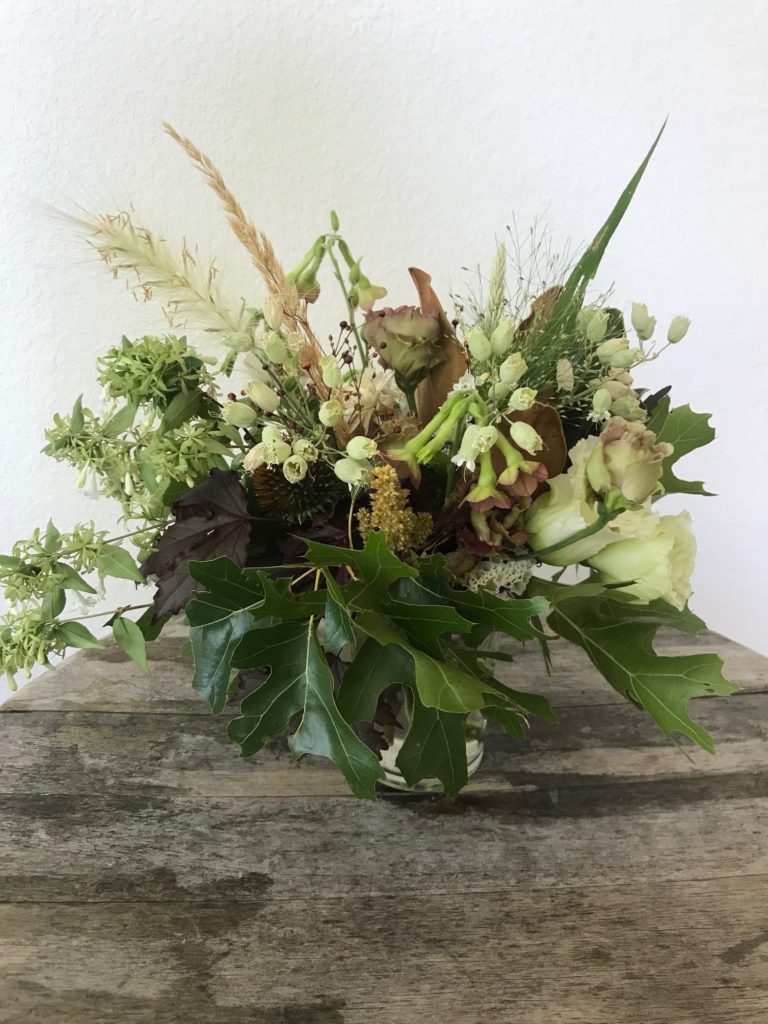
oak, abelia & lots of grasses
If you have space for a cutting garden, then make sure to plant a few flowers in the colors you enjoy during fall. Although sunflowers, marigolds and mums typically represent fall, try zinnias and celosia, which both come in a broad range of colors and are easy to grow from direct seeding. If you want to get fancy, add some jewels of opar and flowering tobacco to your cutting garden. Both make a great late summer-early fall flower.
Maybe these plants and flowers will hold us over until actual fall arrives and we can light that fall candle, set out pumpkins, drink fall-flavored lattes and put on a pair of jeans without sweating.
Share your pictures and thoughts! I’d love to see them. The possibilities are endless!
Here’s to hoping for fall to come quickly…

